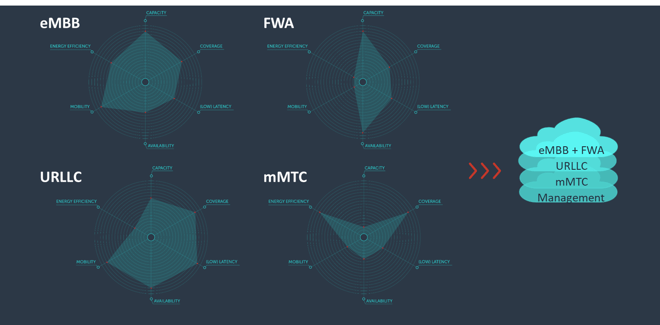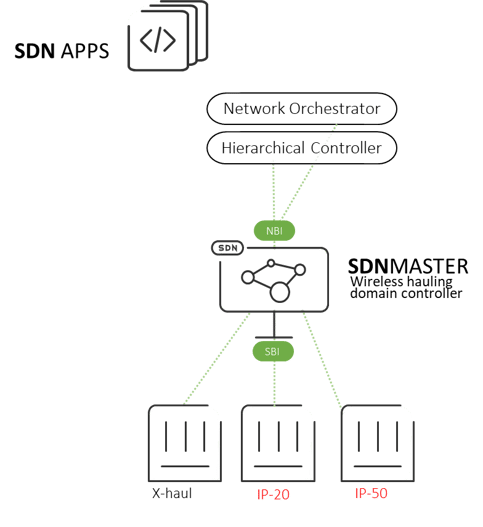When it comes to 5G, both its potential and its challenges are huge.
In order to unlock your 5G potential, you need a highly flexible infrastructure across all network domains. In the wireless hauling domain, this means a wireless hauling solution that is flexible enough to achieve any capacity in any spectrum and can evolve from any existing infrastructure.
It also needs to manage any level of complexity in your network. Adding sites, spectrum and services to the network make it larger, denser and much more complicated. Specifically, the support of new 5G use cases calls for service orchestration via network slicing.
As discussed before, there are two use cases that stretch existing 4G services to the limit: mobile gigabit broadband, via the enhanced mobile broadband (eMBB) use case; and gigabit broadband to the home, via the fixed wireless access (FWA) use case.
Additionally, there are two use cases that address new markets with new services: IoT, via the massive machine-type communications (mMTC) use case; and mission-critical applications, via the ultra-reliable low-latency communications (URLLC) use case.
While those latter use cases create the main 5G potential for new business, target markets and revenue streams, they also require extremely different resources and SLAs from the network, as described in the following diagram:

Although service orchestration via network slicing is required, a sliced network is harder to manage, provision, optimize and troubleshoot.
That is why a key enabler to 5G network success is the use of software-defined networking (SDN).
SDN implementation across all network domains allows simple network slicing, as well as faster time to market for new 5G services, network optimization, and the simplification of operations tasks across all network domains.
SDN is typically implemented with a three-hierarchy approach. The top one is where you run the applications, end to end, with the network orchestrator / hierarchical controller.
In order to simplify the integration efforts among the network elements, and to overcome missing standardization and domain differences, a middle hierarchy is used – domain controllers. These controllers act as mediators for any network domain, be it RAN, IP/MPLS, optical, wireless, etc.
The domain controllers connect the SDN framework to the third hierarchy – the network elements.
Ceragon offers, as part of its portfolio, a wireless hauling domain controller called SDN-Master. This domain controller leverages Ceragon’s support of standard-based northbound and southbound interfaces to make the wireless hauling domain an integral part of any cross-domain management and provisioning framework. This simplifies your 5G operations and allows you to unlock your 5G potential.


